- Student Hacks
- Studying & Revision
- Work & Jobs

10+ GCSE creative writing ideas, prompts and plot lines

Getting a good GCSE creative writing plot going can be difficult, here are some ideas to help you out.
Ahead of your exams, here are a selection of GCSE creative writing ideas and prompts to hopefully provide some inspiration.
The Lost Timepiece
Prompt: In an old, dusty attic, a teenager discovers a mysterious pocket watch that doesn’t seem to tell the correct time.
Potential Story Directions:
- The watch could transport the teenager to different moments in history whenever it's wound.
- The watch might belong to a long-lost relative, leading to a family mystery.
- The watch could be counting down to a significant event, and the protagonist must figure out what is about to happen.
The Secret Garden Door
Prompt: Behind the overgrown ivy in the school's garden, a student finds a door that wasn't there before.
- The door could lead to a magical world, offering an escape from everyday life but with challenges of its own.
- It might be a portal to the past, showing the school's history and secrets.
- The door could be a metaphorical passage to self-discovery, revealing hidden aspects of the character’s personality.
The Last Message
Prompt: A character receives a mysterious message in a bottle on the beach, written in a cryptic language.
- Deciphering the message could lead to an adventure, perhaps a treasure hunt or a rescue mission.
- The message might be from a distant land or time, offering insights into an ancient or futuristic world.
- It could be a personal message from someone significant in the character’s past, triggering a journey of emotional growth.
Midnight at the Museum
Prompt: A night guard at a museum notices that the exhibits come to life after midnight.
- The guard could interact with historical figures, learning about history firsthand.
- There might be a plot to steal an exhibit, and the living exhibits help to thwart it.
- The phenomenon could be linked to a supernatural event or an ancient curse that needs resolving.
The Forgotten Melody
Prompt: A pianist discovers an old, unplayed piano in a neglected music room that plays a melody no one seems to recognize.
- The melody could be a key to unlocking forgotten memories or a hidden past.
- It might be a magical melody, having various effects on listeners.
Each of these prompts offers a starting point for creative exploration, allowing students to develop their storytelling skills in imaginative and engaging ways.
Galactic Storm
Prompt: Astronauts on a mission to a distant planet encounter a bizarre, otherworldly storm.
- The storm could have strange, mind-altering effects on the crew.
- It might be a living entity, communicating in an unprecedented way.
- The crew must navigate through the storm to discover a hidden aspect of the universe.
Unearthed Powers
Prompt: A teenager suddenly discovers they have a supernatural ability.
- The power could be a family secret, leading to a journey of self-discovery.
- It might cause conflict with friends and society, forcing the protagonist to make difficult choices.
- The ability could attract unwanted attention, leading to a thrilling adventure.
Reflections of Reality
Prompt: A story that mirrors a significant real-life experience involving friendship or a pet.
- The story could explore the depth of human-animal bonds or the complexities of friendship.
- It might involve a heartwarming journey or a challenging ordeal.
- The protagonist learns valuable life lessons through these relationships.
Chronicle of Times
Prompt: A character discovers a way to travel through time.
- Traveling to the future, they encounter a radically different world.
- In the past, they might inadvertently alter history.
- The story could explore the moral and emotional implications of time travel.
Apocalyptic Event
Prompt: A natural disaster of unprecedented scale threatens humanity.
- The story could focus on survival, resilience, and human spirit.
- It might involve a journey to avert the disaster.
- The narrative could explore the societal changes that occur in the face of such a disaster.
The Unsolved Case
Prompt: A detective starts investigating a complex and mysterious murder.
- The investigation uncovers deep secrets and conspiracies.
- The detective's personal life might intertwine with the case.
- The story could have a surprising twist, challenging the reader's expectations.
Retold Fable
Prompt: Modernize a classic fable or story, such as the Boy Who Cried Wolf, in a contemporary setting.
- The story could be set in a modern city, exploring current social issues.
- It might be told from a different perspective, offering a fresh take on the moral of the story.
- The narrative could blend the original fable with current events, creating a powerful commentary.
Forbidden Love
Prompt: Two characters from vastly different worlds fall in love, against all odds.
- Their love could challenge societal norms and expectations.
- The story might explore the sacrifices they make for each other.
- It could be a journey of self-discovery and acceptance in the face of adversity.
Thomas Brella is the founder of Student Hacks, starting the website in 2013 while studying at the University of Brighton to share tips and tricks on life as a cash-strapped student. He's now spent over 10 years scoping out the best ways to live on a budget
Follow on Twitter
Like on facebook.
- Teach Early Years
- Teach Primary
- Teach Secondary
- Advertise With Us

- New for Schools
- Browse by subject
- Maths & Science
- English & MFL
- Outdoor Learning
- Product Focus
- Resource Guide
Lesson plan: KS4 English – creative writing
- Subject: English
- Date Posted: 09 October 2015
Share this:
Sometimes it’s very hard in English lessons to encourage students to be creative, especially when it comes to writing. Often in class there are a few students to whom this comes naturally; the majority pipe up with the phrase, ‘‘how do I start?’’ whilst some just look scared at the prospect and begin planning their escape.
There is a need to inject spontaneity and fun into developing ideas for writing and to encourage students to take risks. Students need to begin to see writing as an art form, constructing narratives and piecing together ideas until they form rich literary narrative, not sticking to a predetermined layout. They have to do as Dorothy did and take a journey down the yellow brick road, exploring new characters, finding the unexpected, and learning things about themselves they didn’t know before. As teachers we need to open up space for this.
As suggested to me in a conference I recently attended, a good way to start this process is to put an emphasis on reading for change, and to mould students into dynamic readers who share their ideas in constructive ways. There is a lot to be said for high quality talk translating into the same level of writing (Dialogic teaching, Alexander, 2006).
WHY TEACH THIS?
We all know the government changes to the structure of the English GCSE in September 2015 will be the perfect opportunity for departments to look at the use of curriculum time and perhaps consider different approaches to teaching the new style exams. With coursework now gone and exams becoming more rigorous, it seems important that we take more of an exploratory and ‘workshop’ style approach to some elements of the course, allowing students to build confidence in exam technique and feel prepared to tackle questions independently.
STARTER ACTIVITY
Colouring from the inside out.
Here I refer to an article written by my colleague Caroline Saunders in issue 4.4 of Teach Secondary (Beyond the lines); just as she was encouraging art students to draw without using lines, we should encourage English students to do the same when developing ideas for story writing, in other words colouring their narrative from the inside out.
At the start of the lesson have a series of images displayed on the board and printed out in colour for students to look at. In small groups students should draw out meanings and come up with a range of narrative possibilities.
You may want to support this by encouraging each student to come up with one ordinary, one daring and one ridiculous idea for each image, bringing in an element of risk early on. Students should have 5-10 minutes to look at the stimulus. Then ask one student from each group to move around in a carousel, and share ideas. Students should aim to find as many different ideas that link to the images as possible and report back to their original group. Give students roughly three minutes in each group before moving and repeat as many times as you desire. Hear as many of the ideas as possible.
MAIN ACTIVITIES
1. the lion – finding the courage to write.
Teachers may feel at this stage it is appropriate to pick up on one of the ideas from the starter activity and aim to complete a whole class writing piece, using the initial idea as a starting point.
In small groups or as whole class give out 6-8 pieces of A3 paper. Ask students to write a line of the story, inspired by the main idea. Then fold over and pass on. Repeat this 4-8 times. To make it more challenging on each turn display a selection of techniques students should aim to include.
After completion get one student to read out the narrative. Then as a class try to group together ideas from the exercise that fit together, beginning to form the ‘bones’ of the story.
The next step is to flesh out the story; they could do this as a class, in small groups, in pairs or individually. Or write one paragraph as a class and then get the students to explore and play with the narrative, taking it in different directions.

2. The Tin Man – learning to love writing
If you would like to take this path, then get students looking at a range of literature. Ask them to look at summaries and extracts of stories and plays. Here are a few suggestions:
- Metamorphosis (Franz Kafka)
- Mr Stink (David Walliams)
- Great Expectations (Charles Dickens)
- A Monster Calls (Patrick Ness)
- The Famished Road (Ben Okri)
- Enduring Love (Ian McEwan)
- Matilda (Roald Dhal)
- The Ocean at the End of the Lane (Neil Gaiman)
In groups, ask students to explore different themes in the extract they are given. This could range from the obvious to the more subtle depending on ability. Ask students to evaluate how well each of these work.
Next ask students to pick out where the writer has used ordinary, daring and ridiculous ideas within their work. Get them to explore how the writer uses a range of ideas and devices to move the narrative on.
3. The Scarecrow – discovery of imagination
These activities are about getting students to explore their imagination and become more confident writers.
- Give students scenarios or sentence starters that they have to extend into a short narrative. For example ‘The gate swung slowly open…’ One student of mine wrote ‘The gate swung slowly open, for the last time…’, which became an imaginative ‘hook’ into their writing.
- Use ‘story cubes’ with students; get them to roll the dice to determine an imaginative mix of things to include in their writing.
- Have a class box of random objects which students can use as starting points for their work. n Ask students to develop a range of narrative options in response to the activities above, and throw in things that could happen, encouraging them to write in more than one direction.
Ask students to evaluate each other’s work to determine what works best. Ensure they don’t get fixated on one idea and direction; enable them to have a choice. And reassure them that even if it doesn’t work, the process of finding that out is valuable. Once students start thinking in this way about creative writing they will start to “think about the imagination and how it works, of where it might come from, and where it might take you. Then [they’re] in useful trouble.” (Hanif Kureshi).
HOME LEARNING
- Students begin to explore an eclectic mix of art, films and music and generate a stream of consciousness whilst doing this. Students should write down any thoughts/ feelings/ inspiration/ characters that come to mind. They then use these as a basis in the next ‘writing workshop’.
- Students should be given two stock characters (e.g. Miss Havisham and Mr Stink) and they have to write part of a narrative based on their meeting.
- Reading. Students should be constantly challenged to read different types of texts, both fiction and non-fiction. Give them whole texts/ extracts / poetry to read. They could track this by keeping a record in their ‘workshop’ books. Ask students to read a piece ready for discussion in the next workshop.
Get students to reflect back on their work and evaluate the following:
- Have you included daring or ridiculous ideas?
- Have you taken a risk today?
- Did it work? Why? Why not?
- Which ideas did you like the best? Why?
From these teaching strategies students should find themselves walking down roads less travelled and begin to view creative writing in a different light. It should open up their eyes to the idea of literature as art, not so that it takes away the magic but instead (to borrow some words from Grayson Perry, Reith Lectures, 2014) so that “people like the scarecrow and the tin man and the lion might enter the Emerald City of the art world a little smarter, a little braver, and a little fonder.”
ABOUT OUR EXPERT
Caroline Parker is in her fifth year of teaching, having completed her PGCE and Masters degree at the University of Exeter. Caroline is the newly appointed Head of English at Hazelwick School in Crawley.
You may also be interested in...
- Children’s book awards - vote now!
- CPD through Shakespeare
- Reading levels hit nine year high
Subscribe to Our Newsletter
I agree to the Terms & Conditions and Privacy & Cookies Policy.

Recommended for you...

All about the Ebacc

Book Reviews

Teaching teens about mental illness
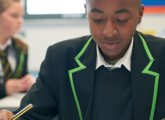
Lesson Plan: KS4 Mathematics, shading graphical inequalities
Maths and Science
Browse by Secondary Subject

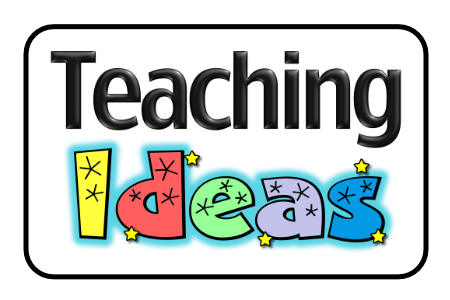
Creative Writing Ideas
Here are some ideas that you can use as part of creative writing activities with your children:
1) Writing Traditional Stories from a Different Point of View
Read “The True Story of the Three Little Pigs” (by Jon Scieszka) with the children. This tells the “Three Little Pigs” story from the wolf’s point of view.
Ask the children to think of a story that they know well and to write another version from another point of view.
e.g. Write “Cinderella” from the point of view of one of the ugly sisters,
OR Write “The Three Billy Goats Gruff” from the point of view of the troll,
OR Write “Goldilocks and the Three Bears” from the point of view of Goldilocks.
2) Design a New Room for the Chocolate Factory
Based on “Charlie and the Chocolate Factory” by Roald Dahl.
Remind the children of the story and read chapter 15 – a description of the Chocolate Room.
Ask the children who have read the story if they can think of any of the other rooms in the factory. Make a list of these on the board for the children to refer to later.
Now ask the children to make up a new room for the chocolate factory, making sure that they are as descriptive as possible.
Jessica Miller has also suggested the following idea:
What might have happened if any of the other children had gotten the factory?
3) Missing Person
The following activity is great fun and usually produces great results, but it must be used with caution. Only try it with a class you are comfortable with and who you think will cope with the situation. Also, try to add a little humour where possible, ensuring that the children are aware that it’s not real – you’re just pretending!
Choose a name for a missing person (e.g. “Paul”), making sure that this is not the name of someone in the class. Before the lesson, put a chair in an empty space in the classroom. For the purposes of the lesson, pretend that this space is where “Paul” normally sits.
Ask the children where “Paul” is. They will probably look at you as though you are mad, but continually ask them where “Paul” is today. Tell them that he normally sits in his space (point to the empty chair) and that he was there yesterday, but he isn’t there today. Insist that they tell you where he is. Hopefully, someone will make up a reason why “Paul” isn’t in today. Argue with them, saying that you have heard differently. Ask if anyone knows anything else. Ask who was the last person to see him. Continue like this for a while, with the children explaining where he is.
Finally, say that as Paul is missing, we will have to make some missing person posters, explaining who Paul is (with a picture so others can identify him!), where he was last seen and who to contact if he is found. When these are made, you could post them around the school.
A missing person poster template can be found below.
4) Supermoo’s New Adventures
Based on the book “Supermoo” by Babette Cole.
Read the story through with the children. Discuss the main characters (Supermoo, Calf Crypton, the BOTS, Miss Pimple’s class), and ask the children to produce a new adventure for a series of new Supermoo books. This could be in the form of a story, or a storyboard with accompanying pictures.
When finished, the children could actually make the books for younger children in the school to read.
5) Recipes for Dreams
Based on “The BFG” by Roald Dahl.
Remind the children of the story and read the “Dreams” chapter to give the children some ideas. Ask them to make a recipe for a dream. They could set it out like a cooking recipe with ingredients and mixing instructions and there should also be a short description of the dream (which could be a “Golden Phizzwizard” or a “Trogglehumper”).
When all of the recipes are finished, they could be made into a “Dream Recipe Cook Book”.
6) Dr. Xargle’s Book of …..
This activity is based on the Dr. Xargle series of books written by Jeanne Willis and illustrated by Tony Ross.
Read through some of the books in the series.
The children should write their own Dr. Xargle story in which he teaches his class about a different aspect of Earth life (e.g. school, work). This will encourage them to look at everyday life from a different point of view. If there is enough time, they could also make illustrations to accompany their text.
7) Class Mascot Activity
Find a small soft toy or puppet which will become the class mascot. With the class, choose a name for the mascot, and discuss its background (where it comes from, its friends and family, its likes and dislikes etc.).
Let each child take the mascot (and a book in which to write) home for a few days at a time. While they are looking after the mascot, they should write a short story in the book outlining what the mascot has done during its stay with them. This can be true or the children can make up events (e.g. a trip to the moon). Encourage them to be as creative as possible.
When the mascot returns to school, spend some time discussing what it has done and where it has been. The class could make a book describing the mascot’s travels.
8) When I am famous…
“In the future, everyone will be famous for 15 minutes” – Andy Warhol
Discuss the above quote with the children, and talk about what it means to be famous. Would they like to be famous? What would they like to be famous for?
The children could then write:
- An account of what they would like to be famous for and why.
- A diary, written as if the child was famous in the future. How are they feeling? What things do they have to do?
- A newspaper interview, written as if in the future, with the child who is now famous.
9) How did the elephant get its trunk?
Can the children think of a story which describes how the elephant got its trunk? Or how about explaining how a giraffe got its long neck? How did the leopard get its spots? Why has a rabbit got long ears? Why is a zebra stripy?
10) Description of a New Animal
A good way of asking children to use their descriptive writing skills is to ask them to invent a new animal. Ask them to describe what it looks like, where it lives, what it does, what it eats etc. It might be useful to discuss existing animals and their characteristics beforehand.
11) Writing a story based on adverts
In the back of many books, there are often adverts for other stories. Why not get the children to choose one of these adverts, and write a story based on the description of the story in the advert. They don’t need to have read the book which is being advertised, and you can get them to compare their own story to the real version when they have finished.
12) Using Objects
Take 4 or 5 unrelated but interesting objects and challenge children to create either a skit or a character description of the owner. Great for oral discussion but also useful for character analysis. Suggested by Jane Knight.
13) Name Characters
This is using art and creative writing, and was suggested by Jeanette Carpenter:
- Fold a piece of paper in half and on the fold line, write your name.
- Cut around the outside shape of your name.
- Open your name and you will have a shape based on your letters.
- Colour and design your shape into a character.
- Glue your finished character to a piece of construction paper.
- Write a descriptive paragraph about your character as if it is an alien arriving here on earth for the first time. Give it a name, place of origin, the reason for being here, etc.
Writing Detailed Instructions
You may also like, teaching ideas for world book day, the parts of a book, bookmark slogans, puzzling pictures comprehension tasks, picture comprehension challenges, lined paper templates, leave a comment cancel reply.
Save my name, email, and website in this browser for the next time I comment.
Join our Newsletter
Get new teaching ideas and resources in your inbox every week!
FREE EMAIL UPDATES!
- International
- Topical and themed
- Early years
- Special needs
- Schools directory
- Resources Jobs Schools directory News Search
Creative and descriptive writing
Australia and new zealand, international schools, tes resources team.

Creative and descriptive writing lessons, activities and worksheets for KS3 and KS4 English classes
With key literary texts to teach and quotations to learn, it is easy to let exploitative fiction writing take a back seat. To help minimise workload, we have pulled together a selection of lessons and activities including writing prompts and exam questions you could use with your KS3 and KS4 students.
Looking for more English resources? Explore the English hub for more hand-picked resources..

Descriptive Writing Task

Descriptive / Creative Writing

AQA Language Paper 1, Question 5: Creative Writing Booklet
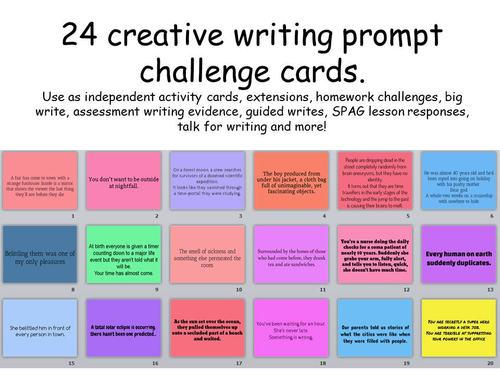
24 creative writing prompts
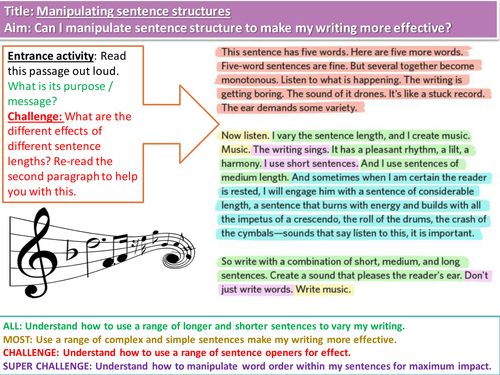
Manipulating structure and punctuation for creative writing
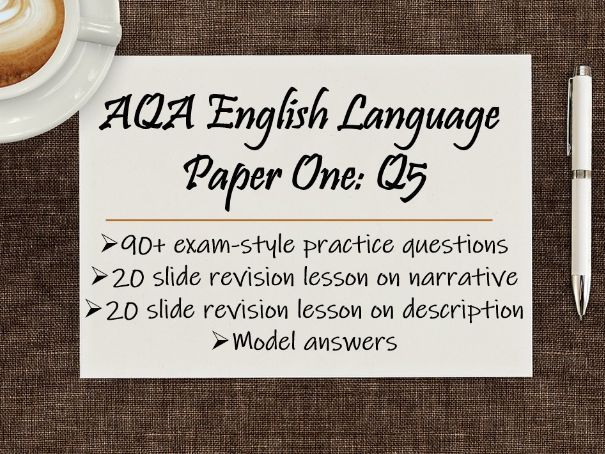
English Language Paper One Question Five Revision & Exam Practice Questions
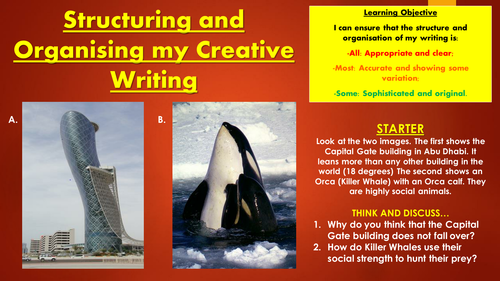
Structuring and Organising Creative Writing
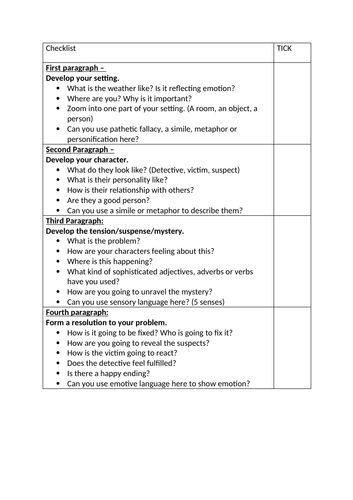
Creative Writing Scaffolding

Describe A Beach - Cover Lesson

Q5 Creative Writing Revision- A3 Intervention Sheet

IMAGES
VIDEO
COMMENTS
Creative Writing Tasks for KS4 Students. You can find 45 creative writing tasks with picture prompts in these ppts. Unlike technical, academic, and other forms of writing, creative writing fosters imagination and allows students to have a voice. Therefore, it is one of the most effective ways to enhance creativity in the classroom.
Unit 2 Reading and Writing: Description, Narration and Exposition gives two prompts to choose between, for an account and an essay perhaps, and Unit 3: Reading and Writing: Argumentation, Persuasion and Instructional sets up a letter, or similar. Jump ahead to WJEC Eduqas non-fiction writing prompts from past GCSE papers.
Retold Fable. Prompt: Modernize a classic fable or story, such as the Boy Who Cried Wolf, in a contemporary setting. Potential Story Directions: The story could be set in a modern city, exploring current social issues. It might be told from a different perspective, offering a fresh take on the moral of the story.
Narration - the voice that tells the story, either first person (I/me) or third person (he/him/she/her). This needs to have the effect of interesting your reader in the story with a warm and ...
Use our range of GCSE creative writing tasks and lessons to help your students to open up and write creatively, including dedicated lessons on creating characters, developing descriptions and more. Part of our wider Fiction Writing Category, you'll find a range of GCSE creative writing task and lesson inspiration right here.
Creative writing. Browse this rich collection of English teaching resources, teaching ideas, templates and creative writing lessons to develop students' descriptive writing, narrative writing and creative writing skills. You'll find compelling picture prompts, supportive word banks and carefully scaffolded resources to engage even the most ...
Anthony Horowitz introduces a line-up of top writers to share their approaches to writing. Suitable for teaching at KS3 and KS4 in England, Wales and Northern Ireland and 3rd and 4th Level in ...
Creative writing pack. A versatile KS4 pack filled with teaching ideas and activities to help students at different stages of creative writing. The pack includes essential sections on sentences, the use of tenses and suggestions for tackling 'problem' areas of writing, from sense based writing to using pictures as prompts.
Teaching ideas. Twenty dynamic ideas to kick-start your students' creative writing. These teaching ideas are great for lessons when your creativity is flagging! The ideas include using a range of prompts (photos, works of art, music, nursery rhymes, memories, literary characters, the news, a bag of sweets, a bag of tricks and even the seven ...
Mock Writing Task Narrative Prompts. Explore more than 212 "Creative Writing Ks4" resources for teachers, parents and pupils as well as related resources on "Ks4 Creative Writing". Instant access to inspirational lesson plans, schemes of work, assessment, interactive activities, resource packs, PowerPoints, teaching ideas at Twinkl!
5.0 (8 reviews) Use Beyond's GCSE creative writing prompts in English lessons to help your students to move through any creative blocks that might be preventing them from writing. Including a range of GCSE creative writing prompt lessons, with a focus on titles, openings, endings and more, everything you need to break down creative writing ...
A versatile KS4 pack filled with teaching ideas and activities to help students at different stages of creative writing. The pack includes essential sections on sentences, the use of tenses and suggestions for tackling 'problem' areas of writing, from sense based writing to using pictures as prompts. Practical support to inspire your students.
More. Tes creative writing resources bring the magic of language to life. Our unrivalled range of KS3, KS4 and GCSE rclassroom materials includes: - Creative writing worksheets and activities. - Storytelling projects. Whatever you need, you're sure to find it amongst the thousands of free and premium resources available for you to download and use.
Creative writing tips. This helpful checklist or set of tips guides KS3-4 students through some of the fundamental elements of creative writing, including careful planning, as well as how to start and end a story. There is also guidance on how to use flashbacks and 'zooming in' to make their story more engaging for the reader.
Celebrate World Book Day in this fun and interactive KS2 guide from BBC Bitesize. Year 4 KS2 English Creative writing learning resources for adults, children, parents and teachers.
Writing fiction. This wonderful collection of fun and engaging classroom activities and resources will help KS3 and GCSE students to develop their own imaginative, narrative and creative writing skills. From planning their ideas and thinking about plot, character and setting, to exploring other forms and genres including poetry and drama ...
Teachers may feel at this stage it is appropriate to pick up on one of the ideas from the starter activity and aim to complete a whole class writing piece, using the initial idea as a starting point. In small groups or as whole class give out 6-8 pieces of A3 paper. Ask students to write a line of the story, inspired by the main idea.
This KS4 pack offers some structured approaches for the teaching of creative writing. Along with a variety of teaching ideas, it includes student-. facing resources (some of which were specifically commissioned for the purposes of this pack) and suggestions for differentiation. The activities and ideas will help students to prepare for and plan ...
Encourage great creative writing with this pack of imaginative scenarios. The pack offers lists of creative writing ideas by theme. Each of the themes (pets, sunflowers and mirrors) offers a series of engaging creative writing ideas for students to begin writing from. Suitable for both KS3 and KS4 students learning to write more creatively.
Encourage great creative writing with this pack of imaginative scenarios. The pack offers lists of creative writing ideas by theme. Each of the themes (pets, sunflowers and mirrors) offers a series of engaging creative writing ideas for students to begin writing from. Suitable for both KS3 and KS4 students learning to write more creatively.
10 visual prompts for narrative/story writing. Great for a one-off lesson or cover work. (KS2/KS3/KS4) International; Resources; ... Creative Writing: Fiction Prompts. Subject: English. Age range: 7-11. Resource type: Worksheet ... (KS2/KS3/KS4) Tes classic free licence. Reviews. 4.5 Something went wrong, please try again later. nyeclaud. 7 ...
Ages: 5-11. Here are some ideas that you can use as part of creative writing activities with your children: 1) Writing Traditional Stories from a Different Point of View. Read "The True Story of the Three Little Pigs" (by Jon Scieszka) with the children. This tells the "Three Little Pigs" story from the wolf's point of view.
Creative and descriptive writing lessons, activities and worksheets for KS3 and KS4 English classes. With key literary texts to teach and quotations to learn, it is easy to let exploitative fiction writing take a back seat. To help minimise workload, we have pulled together a selection of lessons and activities including writing prompts and ...